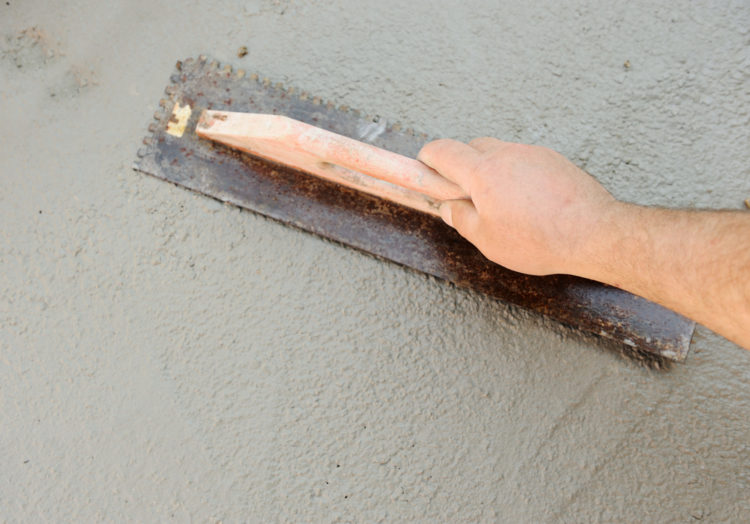It’s important to take the right steps during the curing process so that your concrete has enough time for it to be set properly before you can use it. If you don’t leave your it alone during this crucial stage, it won’t be strong and durable enough.
During the curing process, concrete is still quite vulnerable. It contains a lot more moisture than when it’s fully cured and has just developed a hardened shell. This means that your newly poured concrete needs to cure properly before you can carry out any maintenance on it or do anything else with it in general. If you handle or touch the same during this crucial stage, it won’t have enough time to form a strong enough structure. For your concrete to be set properly before you can use it, there are several days of waiting involved. The following information will help explain what should and shouldn’t be done while your concrete is curing.
Do’s
1. Allow the concrete to cure for a minimum of three days before doing any maintenance or using it in general.
2. Cover your concrete with plastic sheeting after pouring, and then leave it alone until it’s set fully. This will stop water from getting through to the surface if there is any rain during this time and prevent dirt from sticking to the wet concrete.
3. Keep an eye out for cracking and take steps to avoid letting them cause further damage by filling in gaps with more wet concrete before they can get bigger and worse.
Don’ts
1. Don’t walk on the concrete. This is pretty obvious. If you’re walking on it, then that means that it’s not set in place properly. Even if you’re just walking over the top of it, you can cause damage to your concrete and weaken it significantly. This is something that concrete contractors need to remember during these early days.
2. Don’t stack any weight against your concrete slabs. Whether it be pallets or heavy objects, if they’re stacked up against a slab of curing concrete, then this will almost definitely cause some sort of physical damage to the surface layer and probably even beneath too. This matters because any kind of impact could make the cracks bigger and ultimately shorten the life span of your concrete work.
3. Don’t park any vehicles on top of a slab of concrete. It’s similar to stacking weight against the surface. It puts a lot of pressure and weight onto the concrete and weakens it greatly. Not only that, but if you put enough vehicles or heavy machinery onto a hardened patch, then you could end up breaking through into areas beneath which weren’t even meant to be exposed.
5. Don’t leave any items on top of a slab of concrete during curing. This means that coffee cups and cigarette butts should be removed as soon you are done with an area. Even if you think it’s small and insignificant, every little thing can shorten the life of your concrete work.
6. Don’t use powerful water hoses on concrete walls or floors. If you do this, that will leave a lot of impacts and marks on the surface layer of the curing concrete. This could make cracks appear as well as shortening its working life considerably.
Need a Concrete Supplier?
You should never leave freshly poured concrete exposed to the elements. If you do this, it will draw moisture from its surroundings and cause it to crack and become weak. During these crucial first few days, keep your concrete covered with some kind of protection so that it doesn’t develop any cracks or holes on its surface. If you are looking for a concrete supplier in Delaware, contact GFP Mobile Mix Supply, and we will be happy to serve you.



